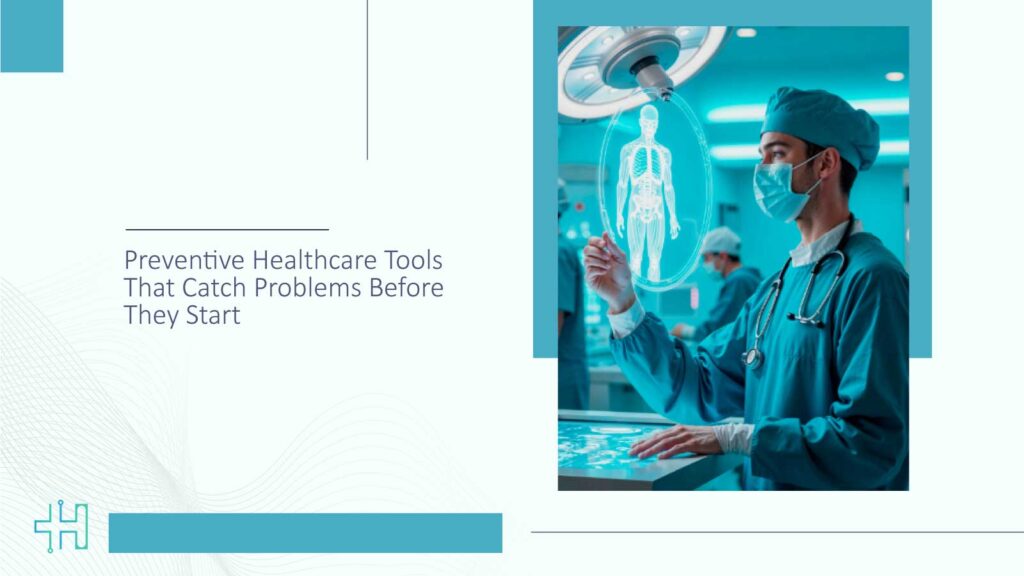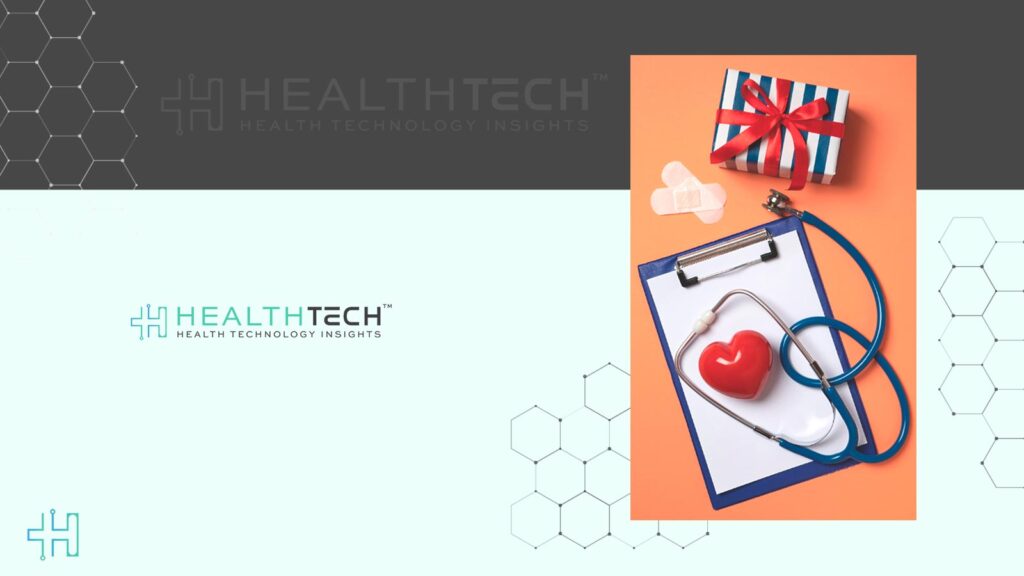In today’s fast‑evolving healthtech ecosystem, preventive healthcare tools are transforming how we stay ahead of potential risks. Decision‑makers in healthcare and technology industries, or anyone intrigued by innovation, will find real value here.
This article explores how smart wearables, AI‑powered diagnostics, genomics, and remote platforms detect red flags before symptoms appear. You’ll learn why these tools matter, who’s leading adoption in the U.S., and how these innovations are reshaping preventive care.
Why Preventive Healthcare Tools Matter
Healthcare has long been reactive, treating after symptoms emerge. Now, there’s a clear shift toward early detection and prevention. For industry leaders, that means aligning budgets and systems around tools that spot health anomalies earlier than ever.
According to Cigna’s 2025 trends, digital health and AI are key for proactive care and better outcomes. The U.S. market for wearable medical devices is projected to grow from US $45 billion in 2024 to $151 billion by 2029, showing a deep commitment to preventive tech.
Emerging Categories of Preventive Healthcare Tools
As the healthcare industry shifts from treatment to prevention, a wave of advanced tools is making that transition possible and practical. These innovations don’t wait for symptoms to show up.
They quietly monitor, analyze, and alert, often in real time. From wearables to full-body scans, what was once futuristic is now foundational. Let’s explore the most impactful preventive healthcare tools gaining traction today.
Wearables and Smart Biosensors
Modern wearables now offer continuous real‑time monitoring of heart rate variability, temperature, SpO₂, and more. The integration of AI and predictive analytics is turning them into preventive healthcare heroes
Studies like TARL in ICUs show that heart rate time‑series shapelet models can detect patient deterioration early with high reliability. Another wearable patch, i‑CardiAx, uses TCN networks to flag sepsis onset nearly 8 hours in advance.
Every time someone wears one of these smart devices, they contribute to the early flagging of potential concerns.
AI‑Enhanced Digital Stethoscopes and Heart Screening
Medical device firm Eko Health has FDA‑cleared AI algorithms embedded in stethoscopes to screen for low ejection fraction and heart murmurs during routine exams. Their CORE500 device and Sensora platform now offer early detection of heart failure risk in office visits.
Full‑Body Imaging With AI Interpretation
Companies like Prenuvo and Function Health now offer AI‑analyzed full‑body MRI scans capable of flagging early-stage cancers and other conditions. Prenuvo’s study showed a 2.2 % detection rate of previously unrecognized cancers in 1,000 participants. While not mainstream yet, this signals where preventive diagnostics may go next.
Genomic Risk Profiling
Polygenic risk scores (PRS) combine genetic markers to estimate an individual’s likelihood of developing conditions such as heart disease or diabetes. In Australia, nurses adjusted screening based on moderate bowel cancer risk detected via PRS testing. Though nascent, PRS offers early stratification for personalized interventions.
Medical Kiosks and Remote Platforms
Medical kiosks in workplaces and community centers can monitor vital signs, blood pressure, glucose, BMI, and ECG, all without clinic visits. Similarly, platforms like ValueCare’s MICA wearable combine conversational AI with real‑time vital tracking to prompt early intervention based on conversational cues and analytics.
Case Study: Cera’s Predict‑Prevent AI
The UK‑based care network Cera uses AI tools to forecast health risks, such as falls or hospitalisation. Their Hospitalisation Predict‑Prevent tool forecasts about 80 % of risks early, cutting hospitalizations by 70 %. Their Falls Prevention AI predicts 83 % of falls in advance, reducing incidents by 20 %. This is a powerful real‑world example of preventive healthcare tools in action.
Adoption Trends Among U.S. Health Leaders
According to an AMA survey, two‑thirds of U.S. physicians now use AI tools, up sharply from the previous year. Enthusiasm is growing as trust builds. The 2025 CADTH Watch List highlights AI for disease detection and remote monitoring as among the top emerging health technologies.
Healthcare organizations and employers in the U.S. are embedding preventive tools into wellness programs, reflecting a broader cultural shift toward proactive health upkeep.
Overcoming Barriers and Ensuring Equity
Despite the promise, tools must be accessible and accurate. Literature identifies challenges around device accuracy, user adoption across demographics, and data privacy concerns. Leaders must support staff training and long‑term strategy to ensure tools deliver real impact.
What This Means for Decision‑Makers
If you’re steering strategy in healthtech, hospital, or insurer contexts, it’s time to expand evaluation beyond reactive diagnostics. Ask:
- Is our leadership funding recommended preventive healthcare tools that catch early warning signals?
- Are we integrating wearables, genomics, and remote monitoring as part of care pathways?
- Have we built frameworks for device regulation, data governance, and equitable access?
Your roadmap could include pilots with AI‑enabled stethoscopes, offering preventive kiosks at clinics, or even using PRS to personalize screening regimens.
Shifting to a Predictive Health Future
The rise of preventive healthcare tools is reshaping medicine, moving from treating illness to detecting early alerts. Wearables, AI devices, genomic profiling, and kiosks now offer tangible ways to catch health concerns before they escalate. Industry leaders are increasingly embracing these technologies. The next wave of impact requires integrating these tools into care models while addressing equity, privacy, and clinical validation.
By leaning into these tools wisely, U.S. healthtech professionals, executives, employers, and innovators can help create a health system that’s proactive rather than reactive, more human‑centred, and data‑driven. The question is not if, but how fast you act.
FAQs
1. What types of conditions can preventive healthcare tools detect early?
These tools support early detection of heart rhythm irregularities, heart failure, early cancers, sepsis risk, prediabetes signaling, falls, and more. Each tool focuses on different risk signals.
2. How reliable are AI‑enabled diagnostics like digital stethoscopes?
FDA‑cleared tools such as Eko’s CORE500 and Sensora have clinical validation showing early detection of low ejection fraction and murmurs during routine exams, all designed for physician use and high accuracy.
3. Are genomic risk assessments like polygenic risk scores ready for U.S. clinical use?
PRS is still emerging in clinical practice. It offers personalized risk stratification rather than diagnosis. As awareness and integration increase, these risk scores may guide more tailored screening strategies.
4. What role do workplace kiosks play in preventive care?
Health kiosks allow employees or community members to check vitals via touchscreens without clinician involvement. They support regular monitoring and flag anomalies for early follow‑up.
5. How can healthcare leaders ensure equitable access to these tools?
Focus on issues such as device affordability, training for underserved populations, inclusive data sets for AI models, and transparent policies around privacy and bias.
Dive deeper into the future of healthcare.
Keep reading on Health Technology Insights.
To participate in our interviews, please write to our HealthTech Media Room at sudipto@intentamplify.com




